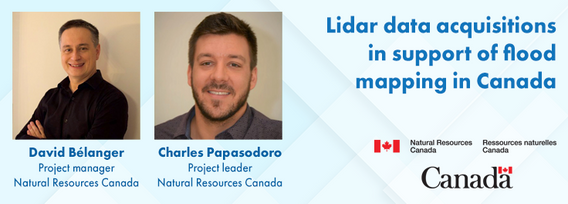Lidar data acquisitions in support of flood mapping in Canada

Mon statut pour la session
Since 2021, Natural Resources Canada (NRCan) has been leading the Flood Hazard Identification and Mapping Program (FHIMP) in collaboration with Environment and Climate Change Canada and Public Safety Canada. As part of this program, the federal government, in partnership with provinces and territories, is currently deploying a joint action plan to advance flood hazard mapping in the higher-risk areas. This plan includes the acquisition of airborne lidar data in support of flood modelling, flood hazard mapping and flood management decision-making.
In this context, the National Elevation Data Strategy team at NRCan is closely collaborating with various partners to conduct lidar data acquisitions in flood-exposed areas and watersheds. Over four years, 59 lidar data projects have been funded, covering a total area of 253,000 km². In addition to being the key foundation base data for flood mapping projects, these data are also gradually being integrated into the products of the National Elevation Data Strategy, complementing other existing lidar datasets in the national elevation products. Lidar data also serves as important inputs for regional modeling, which becomes an important part of the FHIMP.
This presentation will provide an overview the flood context in Canada, review the objectives of the National Elevation Data Strategy, and highlight the key ongoing activities, emphasizing the importance of lidar data for flood management in Canada.


